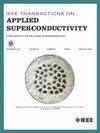干绕式传导冷却反应-风力磁体的设计、建造和运行测试
IF 1.8
3区 物理与天体物理
Q3 ENGINEERING, ELECTRICAL & ELECTRONIC
引用次数: 0
摘要
本研究详细介绍了干绕式电导冷却反应-风力磁体的设计、建造和运行测试。采用转色法对圆丝进行精密干绕,保证了圆丝绕成符合设计要求。为反应导线研制了具有机械稳定性和热稳定性的铜环形电流引线结构,该结构具有填充焊料的螺旋槽路径。在无低温冷却设置之后,磁铁被充电,导致电流低于设计工作水平的淬火事件。分析表明,线圈绕组中意外的热源,加上缺乏预负载结构,导致传导冷却路径不足,导致局部热量积累和随后的淬火。这些发现强调了磁体设计和制造的改进需求,特别是在纳入线圈预负载结构以加强热管理并确保传导冷却磁体的长期可靠性方面。本文章由计算机程序翻译,如有差异,请以英文原文为准。
Design, Construction, and Operational Testing of Dry-Wound Conduction-Cooled React-and-Wind MgB$_{2}$ Magnet
This study details the design, construction, and operational testing of a dry-wound conduction-cooled react-and-wind MgB$_{2}$ $_{2}$
求助全文
通过发布文献求助,成功后即可免费获取论文全文。
去求助
来源期刊

IEEE Transactions on Applied Superconductivity
工程技术-工程:电子与电气
CiteScore
3.50
自引率
33.30%
发文量
650
审稿时长
2.3 months
期刊介绍:
IEEE Transactions on Applied Superconductivity (TAS) contains articles on the applications of superconductivity and other relevant technology. Electronic applications include analog and digital circuits employing thin films and active devices such as Josephson junctions. Large scale applications include magnets for power applications such as motors and generators, for magnetic resonance, for accelerators, and cable applications such as power transmission.
 求助内容:
求助内容: 应助结果提醒方式:
应助结果提醒方式:


